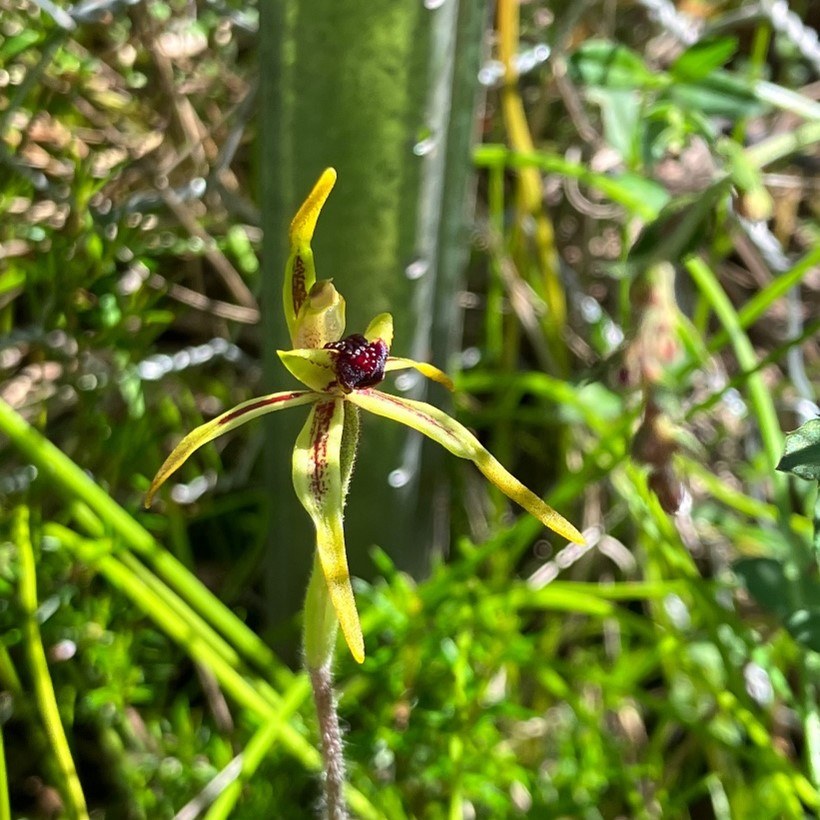Metropolitan SA is one of just 2 locations where the rare bayonet spider orchid can be found. Discover what makes this plant so special and what we are doing to protect it.

The bayonet spider orchid (Caladenia gladiolata) has been recently confirmed at only 2 locations in the world, including in the Mt Lofty Ranges in metropolitan SA, as well as in the southern Flinders Ranges.
After initially discovering this rare species in the wider Adelaide footprint in only 2021, our threatened plant experts were thrilled to see that the orchids were doing well on a recent visit. The orchid was observed with multiple flowers on the same plant, a positive sign that they are happy and healthy.
Discover more about this unique species, what we are doing to protect it, and how you can help.
What is a bayonet spider orchid?
The bayonet spider orchid (Caladenia gladiolata) is a special species, occurring in just 2 known locations around the world. While it is closely related to a range of other similar-looking spider orchids, a stand-out characteristic for this species is its wood varnish scent. Other similar spider orchids don’t share this same fragrance, or even have scents that are especially notable. But a strong wood varnish fragrance is noticeable on this unique orchid.
The orchid itself has a light green, hairy, thin oval-shaped leaf, and produces a greenish to yellow flower with a strip of red colour that makes its way all the way down to the tip of the petals.
Part of its look is in its scientific name. ‘Gladiolata’ originates from the Latin 'gladius' meaning a sword, aptly referring to its sword or bayonet-shaped flower petals.

Why is this species so rare?
For this species, being rare comes with being part of the (orchid) family.
Orchids are a diverse group of plants. They can adapt to a variety of habitats. This ability to adapt gives this family of plants a whole range of species and sub-species. In fact, orchids are the second largest family of flowering plants behind daisies.
But this same ability to fill certain niches can also make them rare. Certain species can be sensitive to losing their unique habitats.
In the case of the bayonet spider orchid, this sensitivity has played a role in its rareness.
Where it occurs in the Mt Lofty Ranges, it has faced threats from weeds, animals grazing on it – be that native, domestic or pest animals – and vegetation clearance.
All of these threats have led to a small population at this site, not large enough to attract many pollinators to help the species thrive and grow its population.